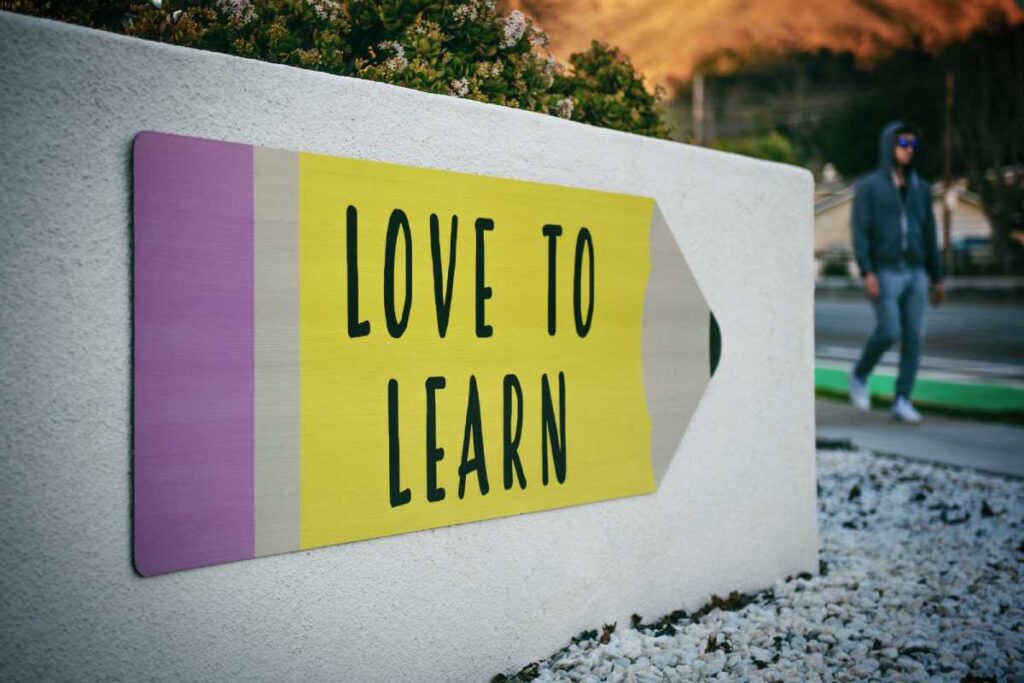Are you looking for ways to make money from your blog, website, or social media accounts? Find out how building digital real estate can help.
I bought a house in Ireland in 2005, a year before the Great Recession. Over the next few years, I watched the value of my house plummet by 40%, and we went into negative equity. To compound matters, I spent a year claiming social welfare. That was a stressful few years.
The Irish government bailed out the banks (but not families chagrin), we exited recession, and I found a job. The value of the house rose, and we exited negative equity, but that experience scarred me. I spent the following years accidentally and then deliberately building and acquiring digital real estate like domain names, content websites, and more recently, NFTS.
These days, I prefer investing in digital real estate to traditional forms of investments, with a big caveat. It’s a good approach for anyone building an online business within the creator economy, consider investing in digital real estate.
Table of Contents
What Is Digital Real Estate?
Digital real estate describes online properties like websites, domain names, social media platforms, digital products, cryptocurrencies, and even NFTs that exist online rather than in the real world.
It comes in many different forms. Deciding on the right investment opportunity depends on your skill set, budget, and appetite for risk, i.e., do your own research.
Why Invest In Digital Real Estate
Traditional investment opportunities mean buying stocks, shares, or property that appreciate over time and generate relatively passive income for an investor.
Fun fact: In the early 2000s, Irish bank shares were a safe investment, then they plummeted to near zero.
These days, digital real estate offers high returns. But it also offers diversification from traditional investments. In addition, Digital real estate is relatively liquid, and it involves less regulation and headaches than, say, renting an apartment or property.
If your investment, like a website, pays off, you could even hire yourself out of a boring job.
That said, digital in-state is risky. For example, you could invest thousands in a content website that doesn’t take off. A Google algorithm update could take your properties. Or you could acquire an NFT and lose it in a scam.
Still, I prefer digital real estate to physical assets as it’s easier to scale profits and has minimal overhead. Moreover, the potential earnings for a successful piece of digital are without a ceiling. The internet is a big place!
The 8 Most Popular Types of Digital Real Estate
Now that we’ve covered what digital real estate is and the risks, let’s dive into the different investment opportunities.
1. A Domain Name
A good domain is a traditional example of digital real estate. Here are some eye-watering domain sales via Namecheap:
- Bullish.com sold for $1,080,000
- Engage.com sold for $803,025
- NAS.com sold for $702,000
So buy a good domain name, let it age, sell at a profit and retire to the Bahamas. Sounds easy, right?
Finding an available domain name with a .com extension that’s usable is challenging and time-consuming.
If you like this approach, look beyond .com. Many tech companies are building out domains and extensions like .IO. I also recently interviewed content creator Steph Smith, who uses stephsmith.io as her domain name.
2. A Content Website
A content website built on WordPress is the form of digital real estate I’m most comfortable with. You can either build or acquire a content website. Or you can apply monetization strategies like affiliate marketing, display advertising, and selling courses and other services.
Content websites represent a fantastic investment opportunity for creators who are comfortable with the written word or working with other freelancers. That said, you’ll also need some basic knowledge of SEO.
Content websites are relatively liquid, and you can sell one in a few weeks if you need a cash flow injection. Established websites sell for as much as 47 times their monthly profits.
But, like any investment, content websites are not without risk. For example, Google algorithm SEO update could tank your site. Or a competitor could snap your SERP rankings for profitable keywords, resulting in a huge drop-off in value for your site.
So, if you have the resources, build or acquire several different websites and diversify your income. Or build a personal media company, of which your site forms a part.
3. An Email List
Growing an email list of an engaged audience is another form of digital real estate. It complements the previous options nicely. Unlike building a platform on social media, you control a relationship with email list subscribers.
You can send them your latest content and write about your products and services. You don’t have to worry too much about an algorithm, although Gmail often sends emails like these to the promotions tab.
Building an email list is fantastic if you want to sell digital products and services and protect an online business’s value from traffic dips.
4. A Social Media Platform
An engaged social media platform is a valuable if risky form of digital real estate.
If you build an engaged presence on social media platforms like Twitter or YouTube, you’re essentially renting rather than owning a piece of digital real estate.
The platform could change its algorithm or even kick you out, like a ruthless landlord.
Or it increases rent by forcing content creators to pay if they want to reach their audience, like Facebook. Or it could simply stop surfacing your links in feeds, like Twitter.
By all means, build a presence on social media but consider it a distribution tool for content and a means of funneling people towards digital space you own, like your site or email list.
5. Digital Courses and Other Products

Digital products like online courses are another profitable type of digital real estate. Create an online course once and sell it many times to your existing and future audience. Selling the first dozen or so courses is the hard bit, but scaling gets easier.
If you have an audience, creating a digital offer is a surefire way to compound the value of your site or email list too.
Ramit Sethi is The New York Times best-selling author of I Will Teach You To Be Rich. His company specializes in helping students start profitable online businesses, primarily via creating and selling digital courses.
Over the years, Sethi moved his company’s digital courses slowly up the value chain. He told me:
“I started releasing more premium products, like my ‘Earn 1k’ course to jumpstart a reliable side hustle and ‘Zero to Launch’ to help you start an online business, at premium prices because I knew people were getting great results. We have over 20,000 student success stories to prove it.”
Ramit Sethi
6. Books
Books are a form of digital real estate that can impact people’s lives.
Indie authors can earn a 70% royalty from book sales on Amazon compared to less than 25% of less via traditional publishing. Plus, you retain 100% ownership and creative control over your book. Some romance indie authors earn a million dollars a month by selling their books directly through their email lists.
Many non-fiction authors I’ve met create this form of digital real estate to:
- Share their story
- Make an impact
- Generate interest in their services, e.g., public speaking, consulting, etc.
Building a back catalog of books to sell is critical if you want to grow this type of real estate. Many successful indie authors don’t earn a full-time living from one book. Instead, they write a series and give the first one away for free. It introduces readers to their back catalog of digital, print, and audiobooks.
The problem? Everyone says they have a book inside them, but only a few take the time to write it!
7. Affiliate Marketing
Affiliate marketing involves promoting and selling products and services for another company or entrepreneur and earning a percentage. Ethical affiliate marketers promote products and services they either use or trust, and their audience will find valuable.
If you’re an affiliate for software, you can earn a lifetime recurring commission on sales. That can quickly add up for several months or after a few dozen sales. Similarly, many course creators offer lifetime commissions for affiliates if they send them an engaged student.
Unless you’re a genius at paid advertising, succeeding in affiliate marketing requires an existing audience that trusts you. But it’s a good approach for building digital real estate if you need an injection of fresh cash flow fast and don’t want to create a product or service.
8. Cryptocurrencies and NFTs

Bitcoin and Ethereum represent the currencies of the creator economy. It’s possible to earn 5% in passive income via staking the former. And that’s before taking into account their meteoric returns.
Non-fungible tokens or NFTs are a popular new form of digital real estate you can invest in via Marketplaces like Rarible and Opensea.
The most high-profile example is the digital artist Beeple who sold a montage of 5,000 artworks for $69 million via Christie’s auction house.
Over the coming years, NFT will become an immensely valuable investment opportunity for creators. Unlike traditional investments, a creator earns a cut of any future sales of their NFT.
An NFT successful creator could earn a 10% cut each time someone sells or trades their artwork on the blockchain.
Diversify Your Real Estate
Most investors like to diversify to protect their income streams, and the same strategy applies works for digital real estate investors.
Consider how you can cap the downside by investing or building multiple types of digital assets.
Some successful online website publishers I know build niches sites for different audiences. They’re not the face of every website, but they apply a playbook and resources for one website to another.
You can also leverage digital real estate profits to invest in more traditional, stable asset classes like index funds that track the performance of the S&P 500. That usually drives returns of 7% per year. Or you could buy and hold Bitcoin and Ethereum, assuming you’re comfortable with volatility.
I follow a combination of these diversification approaches. I use approximately 30% of revenue from my primary content websites to invest in new online properties. Of course, the whole thing may go to zero, so I also funnel some revenue into more stable assets like the S&P500. I’m still burnt from the Irish property crash, though.
How to Make Money With Digital Real Estate: The Final Word
Forget the crazy hustles and scrambles for cash.
Successful entrepreneurs operating in the creator economy own digital properties and real estate that appreciate in value over time. They build, acquire and sell when needed.
Pick one or two that align with your business values and focus on growing those. Far better to build something you own or control rather than working for someone else.

